In the 11th century one of the most important monasteries in Switzerland, a Cluniac priory, was founded in Rüeggisberg.
In Cluny in Burgundy, the place of origin, a monastic reform movement was founded in the Middle Ages. The monks, who lived according to the Benedictine rule, were free from secular influence and were directly subordinate to the Pope and thus free from the pressure to succeed economically. The liturgy was in the foreground in Cluny. Because of the ever-increasing liturgical service, manual labour was neglected by the monks. For this they brought converse (lay brothers) to the monastery. In the heyday of the Cluniacs, they comprised about 1,200 monasteries with about 20,000 monks.
The Rüeggisberg Priory was considered the "first banner bearer of Cluny in the German land" and was an important hostel for pilgrims on their long journey to Santiago de Compostela.
But as early as 1484, even before the Reformation, the monastery fell into disrepair and, after 400 years of changeful existence, was incorporated into the then newly established canonry of the Bern Cathedral. After the Reformation, Bern finally closed the monastery church in 1541. Some of the buildings were demolished and used for other purposes.
From 1938 to 1947 the State of Bern restored the monastery domain and uncovered the foundations, so that today one can get an idea of its former size. The "Haberhuus", as the preserved north transept is popularly known, now only forms around 1/12 of the former complex.
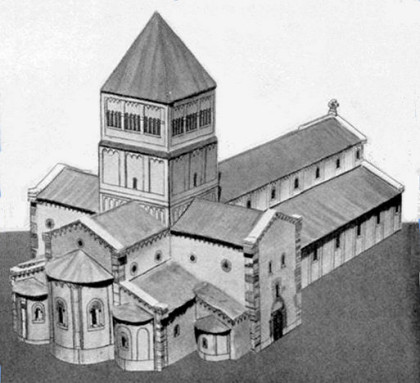
Visitors can find out more about the finds and many other details of the excavation and building history in the adjoining simple museum (next to the parsonage). The museum is accessible at all times.
Click on the mini picture (right) to see a reconstruction of Rüeggisberg.
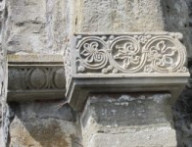
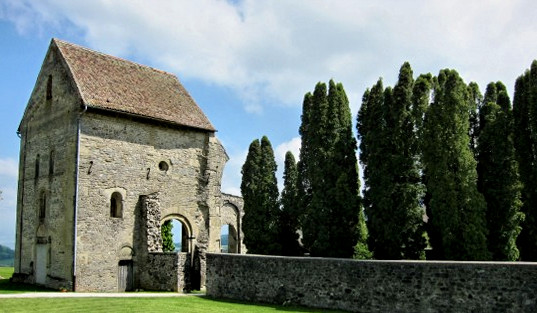
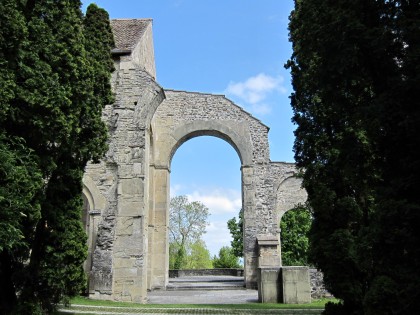
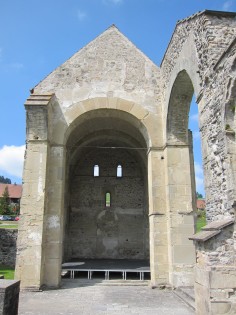
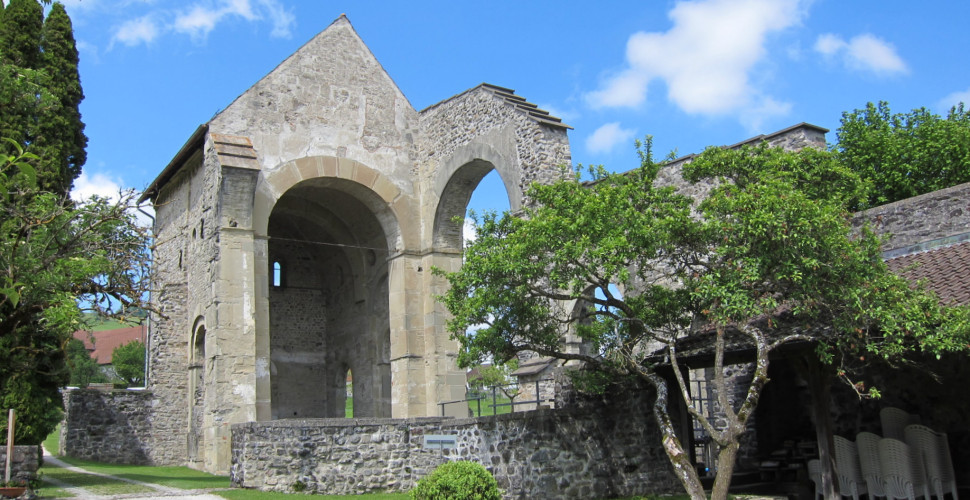

Old Irish Blessing
(found in the small museum in Rüeggisberg near the monastery ruins)
May God be in front of you on the way you are going.
May the wind always be at your back,
and the sun shines warm upon your face.
May you find the bright footsteps of the lucky one
and follow them all the way.
That is my wish for your life journey!
Amen
Picnic in the monastery ruins
The old monastery path leads us down into the valley. On the right-hand side of the slope, we descend via Helgisried and Rohrbach towards Schwarzenburg, where we cross the wild Schwarzwasser river deep in the valley. At Wislisau, where the river has dug deep into the sandstone, our path then leads steeply up again through the forest.
At Henzischwand we come to an agriculturally shaped plateau with many farms and a panoramic view that reaches as far as the Jura chain. Further on, we pass the hamlets of Tännlenen and Schönentannen on field paths.

Schwarzenburg
The beautiful area has largely retained its rural character and has been spared major industrial settlements. The village of Schwarzenburg lies in a depression between the two rivers Sense and Schwarzwasser.
Particularly noteworthy are the castle on the edge of the village, built around 1575, and the 15th century Reformed church with its tower tapering upwards. To the north-west, just outside Schwarzenburg, directly above the banks of the Sense, are the ruins of the former strategically important imperial fortress of Grasburg. The remains of the castle are considered the most important in Canton Bern.
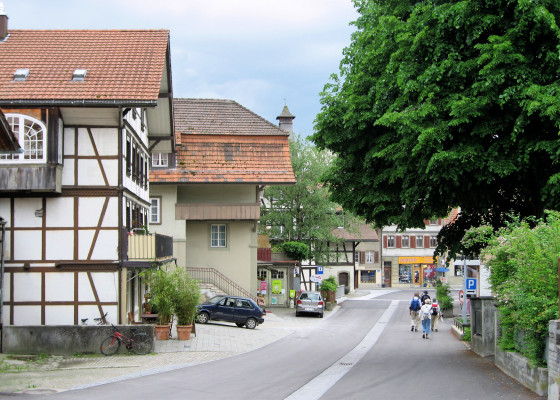
Marching into Schwarzenburg
The Hotel "Sonne" in Schwarzenburg was our "pilgrim hostel".
Our table was festively set. The "pilgrims' menu" was a delight for the eyes and the palate.

